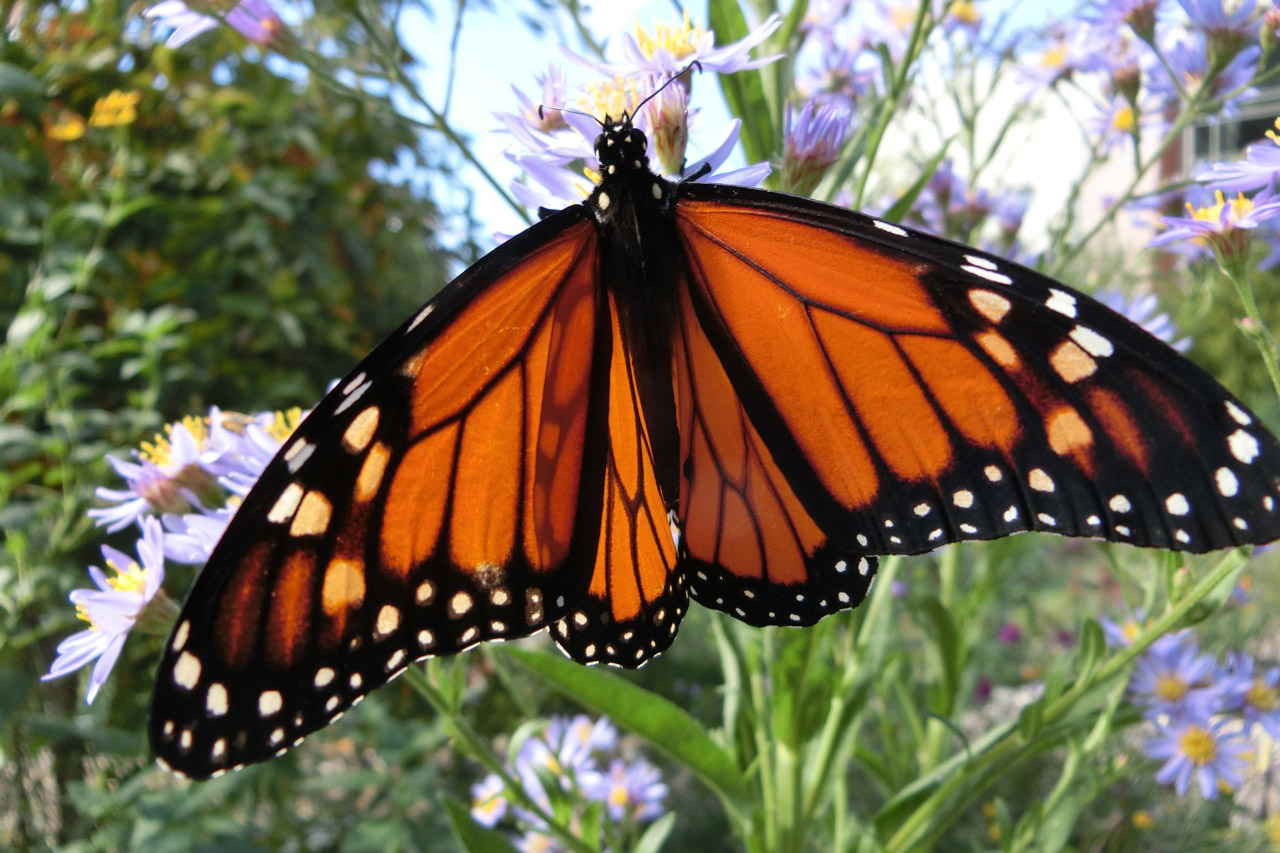This story was originally published on May 22, 2015.
Monarch butterflies are one of the hallmarks of spring. But they’re not around in the numbers they used to be. In fact, by some estimates, monarch populations have dropped by 90 percent over the past 20 years.
Jerry Wiedmann, a retired chemist from Northeast Ohio, has been watching this dive in monarch populations first hand. In a park overlooking Lake Erie, he’s set up what butterfly scientists call a butterfly transect. It’s a defined, one-and-a-half-mile path through meadows and woods that he or someone else monitors weekly, counting butterflies. Some years, Wiedmann has personally counted hundreds of monarchs moving through Ohio. But he says he’s not seeing near the same numbers of butterflies that he did in the 90s or early 2000s.
It’s the same story around the country. Chip Taylor, director of Monarch Watch at the University of Kansas, says monarch numbers started to plummet nationwide in the early 2000s. That’s when the use of Roundup Ready seeds, a type of seed designed to withstand applications of weed-killing herbicides, became widely used. Most farmers loved it. Roundup Ready seeds allowed farmers to apply herbicides to entire fields—killing weeds, but leaving crops unaffected. Fields looked cleaner, with less work. But the herbicides also killed off milkweed—the only food monarch caterpillars can eat.
“I’ve got really nice pictures of milkweed growing in corn and soybean fields around the year 2000,” Taylor says. “Then around 2006, you couldn’t find milkweed growing in corn and soybean fields anywhere.”
LISTEN: “What’s Driving the Drop in Monarch Butterfly Numbers?”
Around 2007, President Bush also pushed for huge increases in production of corn-based ethanol and other homegrown sources of energy. With the help of Roundup Ready technology, many farmers planted corn and soy on land that had previously been fallow. This killed off even more milkweed. In fact, by some estimates, over 100 million acres of monarch habitat have been lost just to the adoption of Roundup Ready crops.
The effect on monarch butterflies has been dramatic. In fact, monarch populations have dropped by nearly 1 billion since the mid-1990s, according to the Center for Biological Diversity. The group is now petitioning the U.S. Fish and Wildlife Service to protect monarchs under the Endangered Species Act. But not everyone agrees that’s the best route to help the butterflies.
“I think that is counterproductive,” Taylor says. “The value of this petition is that it’s caught everybody’s attention.”
Taylor says regulation could set the stage for conflicts between farmers and the federal government. Still, he sees a need to restore tens of thousands of acres of habitat for the butterflies. Taylor says that’s already starting to happen. More education about the problem means more people have started planting milkweed in their home gardens.


